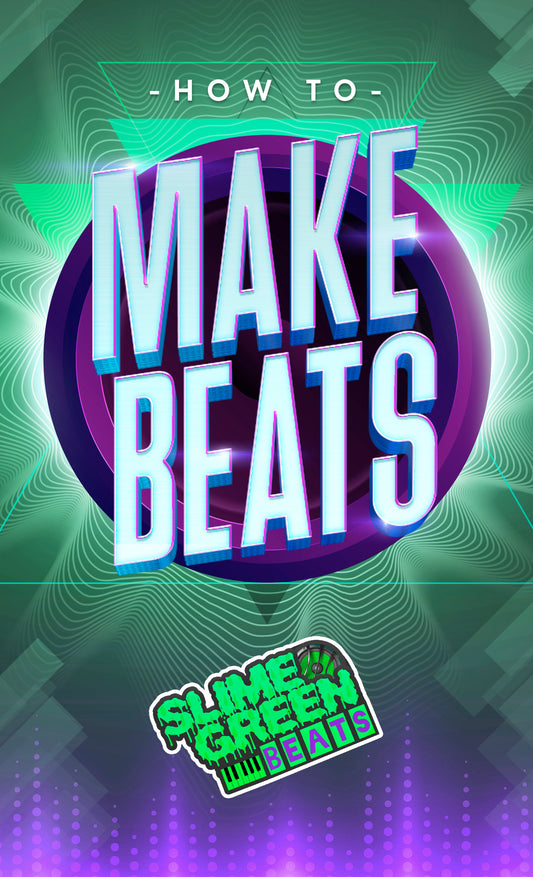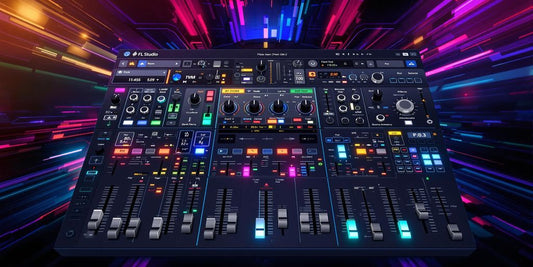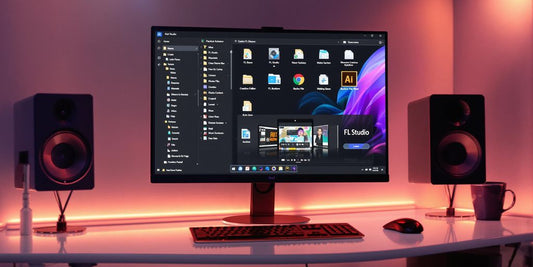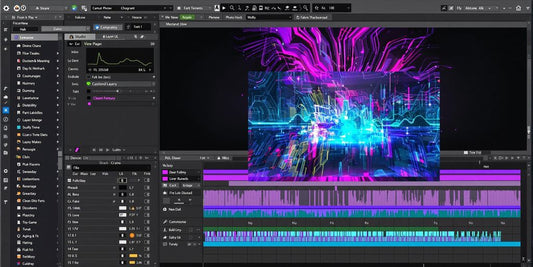Creating your own beats can be both enjoyable and fulfilling, but can also seem overwhelming without proper guidance. To help you begin your beat-making journey, this article will cover the fundamental concepts for beginners, allowing you to start producing your own beats today.
As beats form the cornerstone of any excellent song, it is crucial to master them. Nonetheless, don't be discouraged; with some practice, you'll be creating impressive beats in no time. Let's get started!
What are the essential requirements for creating beats?
If you're interested in making beats, there are a few essential pieces of equipment you'll need. Firstly, you'll require a computer or laptop equipped with audio editing software. Popular options include Logic Pro X, FL Studio, and Ableton Live, although some of these can be costly. Fortunately, there are free alternatives such as Audacity available as well. Additionally, you can utilize AI production tools to enhance your song creation process.
While some of the software mentioned above is optional, they can be incredibly useful in speeding up your workflow and taking your tracks to the next level. Here are two important tools that beginners should consider:
1. Sample Library
A sample library is a collection of sounds you can use to create your beats. There are numerous types of sample libraries available, but if you're just starting out, I recommend beginning with a Hip Hop/Trap sample pack. These packs generally come with a variety of drums, percussion, and melodic samples that you can use to create your beats. Once you have a sample library, you can begin assembling your beats.
2. Digital Audio Workstation (DAW)
A Digital Audio Workstation (DAW) is a software program that allows you to record, edit, and create your beats. There are numerous DAWs available, so you'll need to conduct some research to determine which one is best suited for you. However, this program will allow you to mix and layer several instrument tracks to create your beat.
Before you begin creating beats, it's crucial to have a basic understanding of how your DAW works. Otherwise, you'll likely become frustrated and give up before you even get started.
3. Headphones
Studio headphones are an essential tool for any music producer, as they allow you to hear your beats clearly, accurately and without distractions. When investing in a pair of headphones, it's important to choose the right type and brand that suits your preferences.
As a tip, closed-back headphones are recommended to ensure you hear your beats accurately without outside noise interference.
4. Software for Mixing and Mastering Beats
After creating your beats, the next step is to mix and master them. Mixing involves adjusting the levels of each track in your beat, such as volume, panning, EQ, and compression. Mastering, on the other hand, is the finalizing process of preparing your tracks for release.
Several software programs and tools are available for mixing and mastering, including Neutron, WavMonopoly Vocal Presets, and Ozone, among others.
5. MIDI Controller and Beat Sequencer for Making Beats
To create and play your beats, you may choose to use a MIDI controller, which is an optional piece of equipment. The market offers various types of MIDI controllers, so you will need to determine which features are most important to you. For a start, a MIDI controller with at least 25 keys and 8 pads is recommended.
A beat sequencer is another tool that can assist you in creating, editing, and arranging beats. Different types of beat sequencers are available, from basic to advanced ones. You can try out several beat sequencers to see which one suits your needs and preferences best. Although beat sequencers are not necessary to make beats, they can make the process easier, such as quantizing your drum patterns to make sure they are on beat. Note that you can use any type of audio editing software to make beats.
What are the characteristics of a good beat?
A good beat should be enjoyable to listen to and well-crafted with a clear structure. The tempo of the beat is also important, and it should be comfortable to work with.
Balancing variation and repetition is crucial to maintain interest and prevent boredom for the listener. Producers need to find a sweet spot between these two aspects to create music that is both captivating and easy to understand.
In the world of beat-making, striking a balance between technique and emotion is essential. Repetition can become overwhelming, so it's important to add originality and uniqueness to your beats. Don't be afraid to experiment with different sounds and ideas to create something fresh and exciting.
What are the steps for creating a beat?
To start creating beats, it's important to define the vibe you want to create, considering the genre of music you want to produce, the emotions you want to evoke, and your target audience. This will help you select suitable sounds, determine the tempo, and narrow down your focus.
Next, focus on creating a strong bass line, which serves as the foundation for your track. Strive for a balance between simplicity and complexity when selecting a bass sound that complements the rest of your beat. Start with a simple melody and build upon it.
Drums are crucial for creating rhythm and keeping your track moving forward. Choose drum sounds that complement the rest of your track and keep the tempo in mind.
Add melodic elements like piano or synth sounds that complement the rest of your beat, keeping the key in mind to ensure they fit with the rest of the track.
Fill in the gaps by adding ambiance, effects, and transitions to make your track sound polished and professional. Listen to other tracks in your genre to get ideas for beat fills.
Mix and master your beat to achieve a cohesive sound and enhance its overall quality. Balancing and adjusting individual elements in the track is part of the mixing process, while mastering involves preparing the final mix for distribution.
Finally, share your beat with the world by uploading it to various platforms and seeking feedback from your peers. Continue to experiment and try out new things to create unique and exciting beats.
When you get good enough you can make money selling your beats for purchase.










